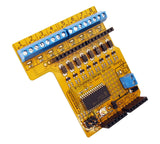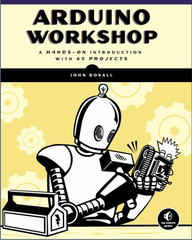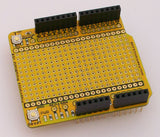For those interested in playing quiz games, or testing their reaction times with others (perhaps in combination with a few drinks) then the project by Efstathios Lymperidis and
Thodoris Bais will be a lot of fun. Their system allows for four users, each of which have a coloured button matching an LED. When one of the LEDs illuminates the time between that and the user pressing their button is measured and calculated into a score.
Apart from the gaming element the project is an interesting example of dual-Arduino projects, in that one board is the master along with the button controls - and the other Arduino runs the TFT screen for score display, with the two Arduinos communicating over the I2C bus. A quick demonstration of the game is shown in the following video:
For all the details, schematics and sketch visit the project home page. And for more, we're on facebook, Google+, and twitter - so follow us for news and product updates as well.
Have you been reading about Arduino and would like to understand more so you can work with projects like the example above, but not sure where to start? Then order one of our Experimenter's Kit for Arduino:
The package includes a wide variety of parts, sensors and modules including: a servo motor, lights, buttons, switches, sound, sensors, breadboard, wires and more. Furthermore a Freetronics Eleven Arduino-compatible board is included to make this an extensive hobby experimenter, inventor and starter kit.
However we don't leave you alone to figure it all out, included is a great project and instruction booklet, plus access to a supporting web page and software examples. In other words - this is everything you need to get started for a fun range of electronics and Arduino related projects! So to get started or for more information and to order, check out the product page.






















